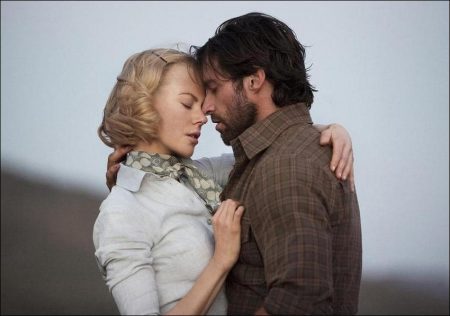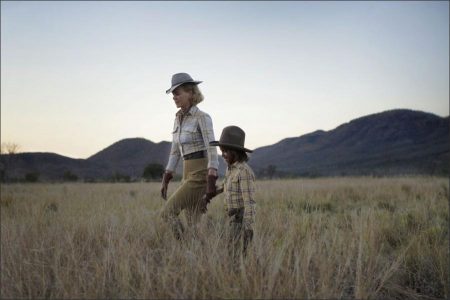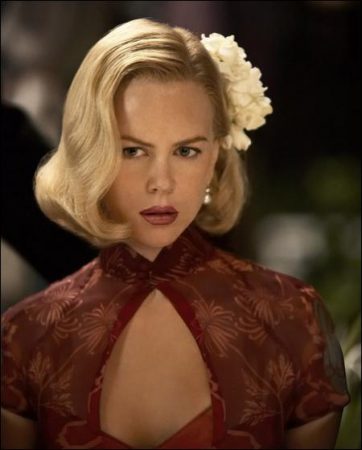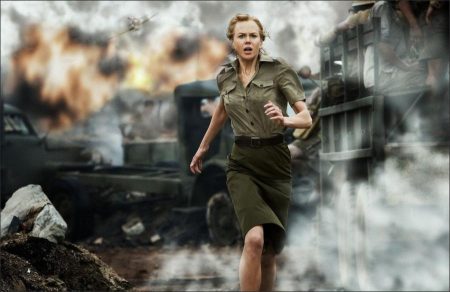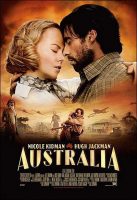Australia Movie Trailer. Never before has an Australian filmmaker attempted a project of such epic scope and ambition set in country. AUSTRALIA marks the culmination of a deeply personal journey for director Baz Luhrmann, and is a testament to the power and influence of Australian cinema.
The country began making an impression on international movie audiences in the 1970s, when government funding for Australia’s burgeoning film industry launched a wave of breakout hits such as “Picnic at Hanging Rock,” “My Brilliant Career,” “Breaker Morant” and “Gallipoli.” The blockbuster “Mad Max” and “Crocodile Dundee” phenomenons of the 1980s piqued worldwide interest in the alluring land Down Under and popularized stereotypes of the larger-than-life characters that spring from its vast, untamed landscape.
With the release of the thriller “Dead Calm” in 1989 (starring a then-unknown Nicole Kidman), the 1990s ushered in a prolific era of smaller scale, highly acclaimed Australian films, including “The Piano,” “Flirting” (also starring Kidman), “Proof,” “Romper Stomper,” “Sirens,” “The Adventures of Priscilla, Queen of the Desert,” “Muriel’s Wedding,” “The Sum of Us” and “Shine.”
Luhrmann burst onto the scene in 1992 with the release of “Strictly Ballroom,” an audacious comedy of dance manners crackling with energy, style and romance. “William Shakespeare’s Romeo + Juliet,” his searing, modernized adaptation of the Bard’s classic, and the dazzling Academy Award-winning musical “Moulin Rouge!” firmly established Luhrmann as an innovative filmmaker with unique vision and a highly stylized, music driven cinematic language all his own.
It was with the completion of this “Red Curtain Trilogy” – and after directing a Tony-winning version of Puccini’s La Boheme on Broadway – that Luhrmann began developing a series of epic films, including a project with Leonardo DiCaprio about Alexander the Great. But after two years of intensive research across Jordan, the deserts of Morocco and the jungles of Thailand with his wife and creative partner, Catherine Martin, the project was shelved when Oliver Stone’s Alexander film went into production.
“I was tremendously disappointed when our Alexander project fell apart, so I went on a journey on the Trans Siberian Railway to clear my head after focusing on it for such a long period of time,” says Luhrmann, who later joined his wife and young daughter in Paris. “We decided to spend time in Paris to regroup, recharge our spirits and assess what our next creative step would be. We began to discuss our little girl’s life. There is no border between our life and work, and due to the nature of what we do, our children will always be part of a traveling circus. But, we asked ourselves, Where is the place they’ll call home? Where will their roots lie? This, more than anything, prompted our desire to reconnect with Australia.”
While traveling back to Sydney from Paris, Luhrmann began to imagine a story about a main character who embarks on a great journey that transforms her in a profound way. “It is the issue of transformation that I am most interested in exploring at this time,” the director explains. “I recognize a feeling that exists in me and my generation that at a certain age, you get locked into a pattern of life that will remain constant for the rest of your days – growth simply stops. So I was very interested in the idea of growth and rebirth. Secondly, life in the post-9/11 world has created an unnerving environment in which the future seems unpredictable and precarious. So I was also interested writing a story about characters who live in uncertain and tumultuous times.”
Another important theme emerged for Luhrmann as he developed the character of Lady Sarah Ashley, a woman whose static life is transformed when she is plunged into upheaval during her journey to the farthest reaches of Australia’s Outback. “We are living in a moment in time in which the forces of change are so great that the only act that truly empowers us is to defend the love that we believe in,” he says. “On a personal level, I came to realize that if I am surrounded by the people I love, and especially by my family, then even during these volatile times I have everything. I have a truly vital and meaningful existence. This is the realization that Sarah comes to as a result of her transformation. Even if honoring your relationships means defying everything and everyone to be together, you do what you must do to be with the people you love.”
The wild, untamed world of Northern Australia in the late 1930s and 1940s, with the looming shadow of World War II darkening its shores and divisive governmental policies tearing families apart, provided a rich canvas on which to bring these themes and issues into relief. Luhrmann and his wife, production and costume designer Catherine Martin, conducted an intense period of meticulous research into the era.
“We always start our process in reality,” says Martin, winner of two Academy Awards for production and costume design on “Moulin Rouge!” “Baz is exigent in insisting on accurate historical investigation so that any divergence from the facts is made consciously.”
“The DNA of this film comes from classic epic romances, but we had to find our own particular cinematic language to tell this story,” Luhrmann elaborates. “While we compress geography, time and some facts to amplify the drama and romance, we never change the fundamental truth in which the world of the film is set.”
During his research, Luhrmann became fascinated by the collisions of cultures and ethnicities living in Darwin, a thriving waterfront outpost in Australia’s “Top End,” the northernmost part of the sparsely populated Northern Territory. “Darwin at that time was a bit like the Wild West or Africa, because it was a vast, inhospitable place that could swallow you up. It was the end of the world, and at the end of the world you find extreme characters. There was an extraordinary clash of peoples. There was the Anglo administration under English control, cowboys and gold-rushers, a huge Asian influx, Greek pearl divers and a significant Indigenous population.”
This melting pot at the end of the world was rocked by war in February 1942, when Japanese warplanes – the same fleet that had bombed Pearl Harbor – attacked Darwin, killing 243 people and all but destroying the town. The tragic event is not well known outside of Australia. “I’m a history buff, so I knew a lot about it,” says Hugh Jackman, “but what I didn’t know – and what will come as a shock to many people – is that the Japanese bombed Darwin with twice the airfreight they used to attack Pearl Harbor.”
Luhrmann incorporated the bombing of Darwin into his narrative as a fulcrum for Sarah’s journey of self-discovery. He also drew from history in depicting the Japanese forces’ invasion of “Mission Island,” a fictitious settlement of bi-racial children who were, at the behest of the government, separated from White society and their Indigenous communities and placed in the care of missionaries. “While the attack on `Mission Island’ is a mythical telling, there are documented cases in which Japanese troops landed on Australian islands and attacked, captured and killed priests and mission staff,” Luhrmann says. “We took these real-life accounts and rewove them into our story.”
To further his understanding of Australia’s relationship to its Indigenous people and the controversial issue of the Stolen Generations, as these half-Aboriginal, half- Caucasian children who were excised from society have come to be known, Luhrmann traveled to Bathurst and Melville Islands to speak to men and women who had been mission children. “Working with our Indigenous partners in the telling of the Stolen Generations led to a theme that we have tried to touch on in the film,” the director relates. “It is the idea that you cannot really possess anything; not land, not a person, not a child. Real love makes you realize that you are only a caretaker for these things. All that you do possess at the end of a life is your story, and stories live on in the physical landscape.”
Setting AUSTRALIA in this particular period of the country’s history allowed Luhrmann to explore another crucial aspect of its culture and economy. “One of the underlying pleasures of this film is that we’re able to celebrate the brilliant and extraordinary backbone of the cattle industry in Northern Australia in the 1930s, and that is the indigenous stockmen,” he enthuses.
Martin’s production and costume design teams began the process of researching the very particular social history of the cattlemen of the era by studying various works of non-fiction and biographies such as Hell West and Crooked by Tom Cole, and Kings in Grass Castles and Sons in the Saddle by Mary Durack, which vividly describe the lives of the pioneering people who lived in the Kimberley Region of Western Australia at that time.
Interviews were conducted with veteran outback cattlemen, and the filmmakers consulted extensively with the owners of Carlton Hill Station, the property on which the film’s fictional homestead Faraway Downs was constructed. Luhrmann, Martin and their research teams made numerous field trips to the Kimberley region, as well as a visit to the Stockman’s Hall of Fame in far north Queensland, and the Northern Territory Archives.
Martin also utilized Picture Australia, an extraordinary online cache of digitalized images from libraries all over Australia, which includes the Durack Collection of photographs, an invaluable visual insight into the book series. This resource enabled Martin’s team to study thousands of scanned images not available in print.
“We needed to be clear and accurate about a lot of unusual detail from the history of this particular period,” Martin says. “We researched everything from the appropriate 1930s breed of cattle, the shorthorn, to what the cattle was worth and how the prices rose during the war years. We learned how much a drover would get paid, how many stockmen and horses he would need to deliver the cattle, and what a particular station’s brand looked like. We had to investigate the 1930s Australian stock saddle and tack and have them custom made for the actors by a saddle maker versed in the finer details of the period. The Australian stock saddle is designed to hold the rider securely over great distances and rough terrain. A lot of indigenous stockmen rode bareback and shoeless, but certain modifications needed to be made in translating this to film, either for character or safety purposes.”
Luhrmann’s research even extended to participating in an actual cattle drove. Along with associate producer Paul Watters and Luhrmann’s assistant, Schuyler Weiss, the director found himself on horseback, pushing hundreds of cows through the hot and dusty outback terrain.
At another point, as he was plotting his characters’ trek through the Northern Territory and the vast, unforgiving Kimberley, Luhrmann embarked on a private journey across the country to experience the land in a deeper, more personal way. He gained insight into the landscape and the people that proved to be more powerful and potent than anything he could derive from history books, and he encouraged Martin to take a similar trip – which she did, along with their two children.
“One of the reasons I started on this creative journey, what I sought to get out of it, was a more direct understanding of my country,” Luhrmann says. “I became deeply connected to the truth and realities of my homeland, its history and its people. Being in the cross-fire of these stories, while in the process of creating my own, has deepened my understanding of Australia immeasurably.”
Australia (2008)
Directed by: Baz Luhrmann
Starring: Nicole Kidman, Hugh Jackman, David Wenham, Jack Thompson, Bryan Brown, Nathin Butler, Damian Bradford, Essie Davis, Lillian Crombie, Michelle Dyzla, Arthur Dignam, Max Cullen
Screenplay by: Baz Luhrmann
Production Design by: Catherine Martin
Cinematography by: Mandy Walker
Film Editing by: Dody Dorn, Michael McCusker
Costume Design by: Catherine Martin
Set Decoration by: Beverley Dunn
Art Direction by: Ian Gracie, Karen Murphy
Music by: David Hirschfelder
MPAA Rating: PG-13 for some violence, a scene of sensuality, and brief strong language.
Distributed by: 20th Century Fox
Release Date: November 26, 2008
Views: 173
